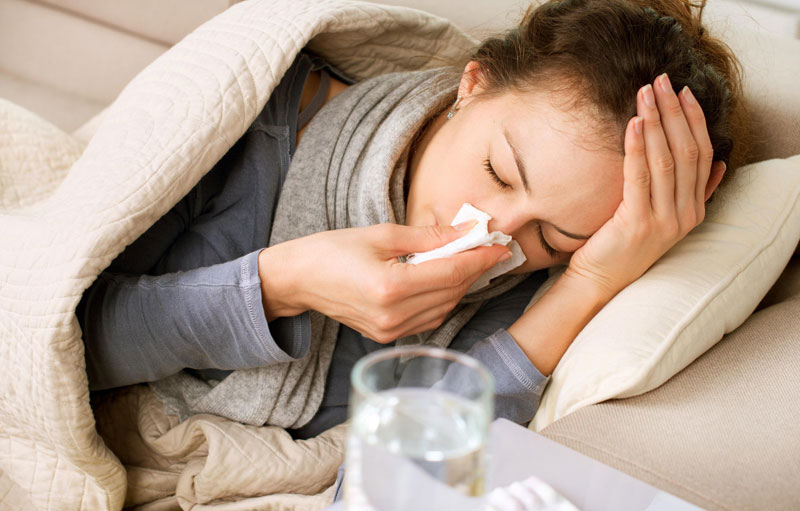Monsoon invites common health problems
Kathmandu
Monsoon is a ripe time for germs and bacteria to breed. Stagnant water all around the locality, water resources mixed with sewage, land and soil pollution play a vital role in spreading several infections. If timely preventions are not taken, then there are high chances that one has to queue up at hospitals to get a proper treatment.
Common problems
With the onset of monsoon, there are high chances that people suffer from water-borne diseases. Diarrhoea, typhoid, Hepatitis A and E are common during the monsoons. It happens when there is an intake of contaminated water. “Most of the people suffer from such infections during the rainy season as this is a favourable time for the agents to multiply,” informed Dr Kamal Raj Thapa, Assistant Professor, Medicine Department, Bir Hospital, Kathmandu. It can also become an epidemic. Overflow of ground water too can contaminate tap water and intake of it results in infections. Among such infections, diarrhoea is common in the country.
“These days there are 25 to 30 per cent of new patients visiting the hospitals because of diarrhoea,” informed the doctor. People drinking water from the same source are prone to get such an infection. As it is a communicable disease, it spreads easily when people drink contaminated water.
Along with seasonal changes during the monsoons, there are chances of viral flu. “Because of the fluctuating temperature and humidity, it acts as a favourable environment for the virus. This is why people suffer from viral fever during the monsoons,” stated Dr Thapa.
Pregnant women must be conscious of their health during the monsoons as drinking contaminated water may lead to jaundice, and this can be fatal.
Mosquito alert
Stagnant water is necessary for mosquitoes to breed. During monsoons, rainwater gets collected in flowerpots, tyres of vehicles, and puddles where the mosquitoes lay their eggs. This is why there are high chances of malaria and dengue during the monsoon season. These diseases are quite common in the Tarai region. And people living in the Valley can also be affected as mosquitoes are found here too.
But you can protect yourself. First do not let water collect. “Wearing full sleeved clothes, filling puddles in the locality, and using mosquito nets are some of the preventive measures. It will be better not to go out in the evenings,” suggested
Dr Thapa.
Snakebite
There are high chances of snakebites in the Tarai during monsoon. People are seen sucking the venom out which is a wrong practice. The venom doesn’t move in the body from the blood, rather it moves through the lymphatic system.
“Along with this, applying pressure and tying the areas around the snakebite should also not be practised; rather gently tying areas below the wound and areas around it is necessary. People also must not cut the wounded area as doing so leads to complications. Walking must be strictly prohibited after a snakebite and immediate medical help is necessary,” informed the doctor.
Other issues at hand
Leptospirosis is a bacterial infection caused by a bacteria leptospira. This infection is common in Chitwan during monsoon. “A patient will show symptoms of fever, jaundice, pneumonia, and meningitis. Presentation of the symptoms will be as per the disease. But in most of the cases fever and jaundice are common,” shared Dr Thapa.
The level of water rises in the rivers during this season and as there are multiple rivers in the country, we often hear of children dying because of drowning. This is why parents must take extra care of their children during monsoons. “A proper guidance about the consequences of swimming in flooded rivers, ponds and lakes must be given to children,” suggested the doctor.
Do’s and Don’ts
• Drink boiled and purified water (boil for at least 10 minutes after it starts to boil)
• Prevent children from getting drenched
• Eat healthy home cooked food
• Take rest if you have infections
• Isolate yourself from crowd so as to prevent transmission
• Maintain personal hygiene
• Do not apply a tourniquet after snakebite






